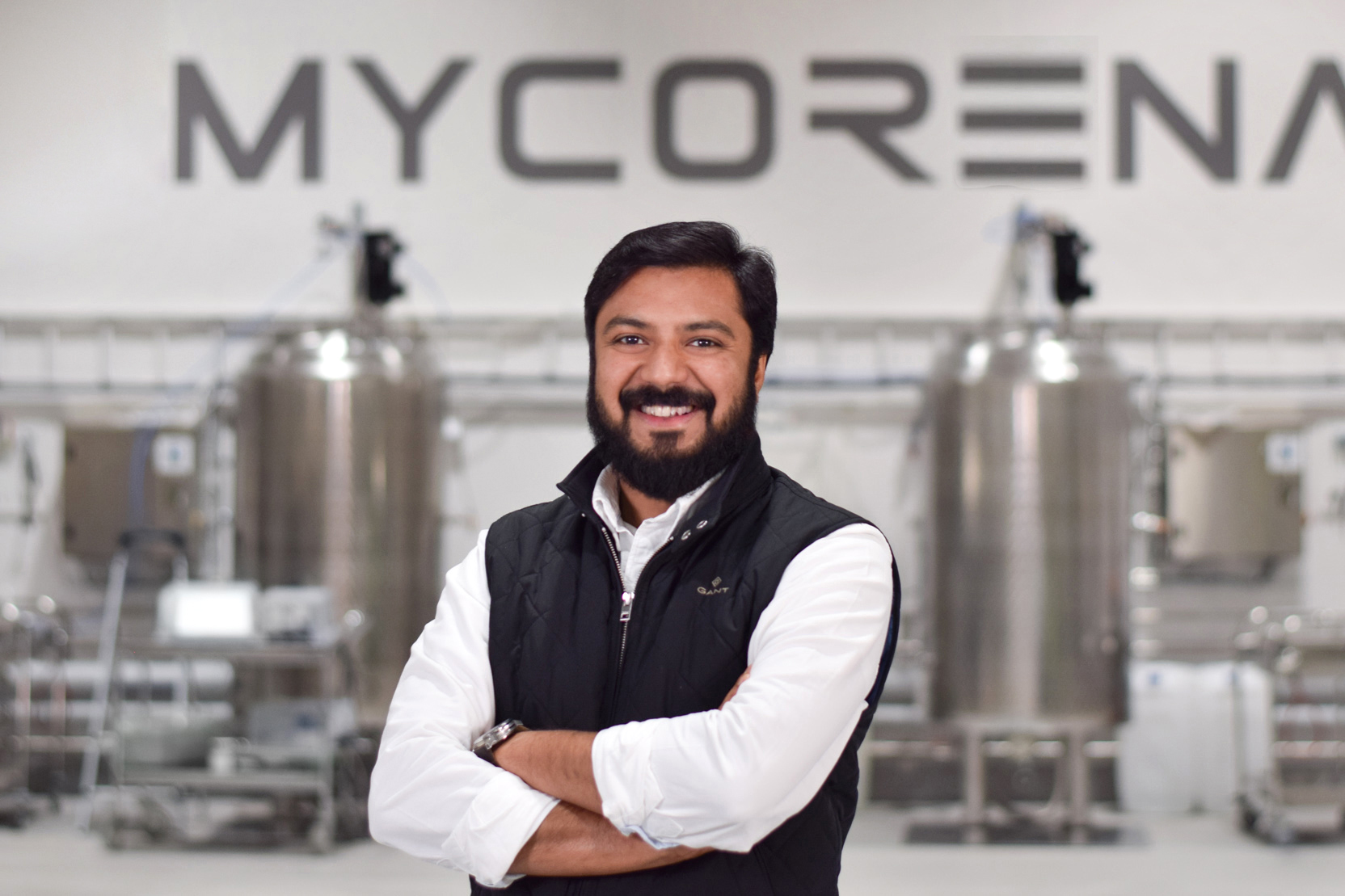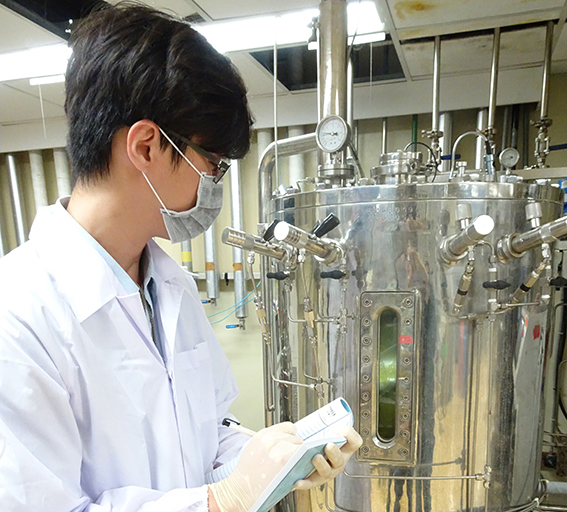

Deep Dive: Microbes to meals
Sustainable, scalable, and resource-efficient, microbial proteins could transform the way we produce food. But, asks Lloyd Fuller, can they overcome adoption challenges and reach the mainstream? Here, we speak with a panel of industry leaders who weigh in on whether they’re ready to serve
With precision fermentation, plant-based, and cultivated meat all vying for headlines in the complementary protein space, microbial biomass ingredients have been quietly gaining traction, offering advantages in sustainability, scalability, and resource efficiency. Experts point to key drivers of this growth, including cost-effectiveness, efficient production, resilient supply chains, and reduced environmental impact.

Microbial proteins represent a fundamental shift in food production, requiring significantly less land and water than traditional agriculture and operating independently
of seasons. With shorter production cycles and local manufacturing feasibility, they are increasingly being seen as a cornerstone of a sustainable global food system.
“When comparing microbial protein to other biotech food technologies, it’s helpful to set cultivated meat aside, as it appears to be further down the line in terms of commercial viability,” begins Céline Schiff-Deb, Chief Scientific Officer at MISTA by Givaudan, who was one of six speakers appearing on the December 2024 Protein Production Technology International webinar, Microbial Proteins: Driving Transformation & Sustainability in the Food System. “Instead, a more relevant comparison might be with precision fermentation, where microbes function as miniature factories to produce specific proteins.” Schiff-Deb believes this distinction helps clarify the focus of microbial protein development and its near-term potential.
Microbial protein stands out for its cost-effectiveness, sustainability, and nutrient density. Its efficient production process – utilizing the entire microorganism – reduces capital and operational expenditures, making it highly competitive. Meanwhile, the adaptability of microbes to utilize diverse carbon sources, including sugars, agricultural byproducts, and even waste gases, enhances their sustainability credentials.
Despite their promise, though, microbial proteins face challenges in widespread adoption. Although their benefits are documented, translating them into commercial viability remains a hurdle. Industry leaders therefore emphasize a multi-faceted approach, including integrated solutions across the value chain, from ingredient development to consumer education. Innovative business models are also essential.
“It’s important to address a key challenge: why is it so difficult for the food industry to embrace these new ingredients?” questions Schiff-Deb. “The main reason is that every microbe is its own unique system. Unlike traditional ingredients, microbial proteins are not simple drop-ins – they come with distinct nutrient profiles and functional properties, meaning they require significant exploration to understand how they can be effectively used.”

For CPG companies and food-service providers, adopting these ingredients requires investment and a commitment of resources for testing. Likewise, accelerating adoption hinges on raising awareness, encouraging companies to recognize the potential and commit to testing. Identifying ‘hero’ applications – specific products where the ingredient shines – is critical, and requires a clear narrative explaining the advantages, addressing concerns, and highlighting the positive impacts.
Now is the time to fully leverage that potential and build a food system that works with our planet, rather than just taking from it
Early collaboration between startups and established food companies is of course vital. These partnerships allow for better alignment on refining ingredients. They also create opportunities for joint development agreements (JDAs) and strategic investments, providing startups with resources. Startups rely on such partnerships to validate technologies, demonstrate traction, and secure funding.
Flexible friend
The versatility of microbial proteins extends beyond protein content. These microorganisms can also provide valuable sources of fats, oils, fibers, and carbohydrates. Some firms are developing microbial sources of Omega-3s, encapsulating oils, and creating fiber-rich products.
Beyond macronutrients, microbial proteins also offer essential vitamins and minerals, which are naturally bioavailable within the living cells. The fact that these nutrients are present within the living cells enhances their bioavailability. Some bacterial biomasses are rich in iron and vitamin B12. Microbes can also contribute pigments and bioactives.
Microbial proteins are cultivated in controlled environments, eliminating undesirable components found in other protein sources. This purity and safety profile presents a clear advantage.

Katelijne Bekers, Co-founder & CEO, MicroHarvest, recommends a holistic approach, encompassing scalability, supply chain resilience, and strategic partnerships. “I think all three of those aspects are very important, but scalability is a particular focus for us,” she says. “In the B2B ingredients market, the companies we serve rely on scale – it’s fundamental to their business model. For a new ingredient to be adopted, it must be available at scale. This is often a key challenge for emerging technologies and new ingredients because they need both time and customers to scale up. It creates a difficult cycle.”
However, Bekers points to the growing market demand for sustainable ingredients and the increasing strain on supply chains. She advocates for decentralized production, utilizing fermentation and locally available side streams as a way to enhance sustainability and resilience. “Fermentation technologies, which operate in controlled bioreactor environments, can theoretically be implemented anywhere. This allows for the use of locally available agricultural or food industry side streams, making production more sustainable and adaptable to regional needs. That, I believe, is the production system of the future.”
The selection of the appropriate protein source is critical. Microbial biomass proteins are well-suited for various applications. Precision fermentation enables customized proteins. Plant-based proteins continue to hold a dominant position, although hybrid formulations are an emerging trend. “We’re looking at a very diverse range of protein sources, and we need them all,” continues Bekers. “The protein space is vast, and each of these sources contributes to a more sustainable food system. People don’t eat the same food every day – they enjoy variety – so the market is big enough for each type of protein to play to its strengths. It’s important to focus on what you do best.”
The shift of some biomass fermentation companies from animal nutrition to human food reflects the evolving dynamics. Although animal nutrition remains significant, the human food market offers higher margins and greater consumer demand. “If you compare animal nutrition to human nutrition, there are clear differences in priorities, even though there is some overlap,” says Bekers. “For us humans, texture, taste, and mouthfeel are often just as important – if not more so – than nutritional value.
Although improving health benefits is a goal, when you look at alternative dairy products, for instance, you see that sustainability tends to be the primary driver, followed
by sensory experience, with nutrition coming afterward. This is largely because we have access to a diverse diet, so minor nutritional trade-offs aren’t as critical. In contrast, many animals consume the same food every day, so their nutrition needs to be highly precise and consistent.”
Ramkumar Nair is the original Founder of Sweden’s Mycorena (which was acquired by Naplasol in August 2024) but in December 2024 he announced a new venture on LinkedIn. Drawing on his experience with mycoprotein, he highlights the influence of large corporations and the growing importance of direct engagement with consumers. “Essentially, what we’re doing now with the new venture is a kind of restart of Mycorena, but with all the lessons we’ve learned along the way,” he reveals. “The biggest takeaway for a company like Mycorena – which is focused on producing an ingredient – is that so much depends on the big players. Larger companies ultimately determine how new ingredients reach the market.”

Nair describes Mycorena’s initial success, followed by slower growth as major food companies became more cautious. “We observed that these major players face their own challenges – whether supply chain disruptions, shifting consumer preferences, or broader market uncertainties,” he recalls. “As a result, they’ve become hesitant to introduce something entirely new. Rather than committing to a full-scale launch, they’ve taken a wait-and-see approach – observing whether mycoprotein will establish itself and how new players enter the space. This ‘waiting game’ had a direct impact on our growth strategy.
“We positioned ourselves as pioneers, building a large-scale factory to support a mass-market rollout,” Nair explains. “However, when major players hesitated, our momentum slowed. To be clear, none of them outright rejected us, but they took a cautious approach, waiting to assess market maturity. For a startup like ours – which relied heavily on investor funding – that kind of delay is difficult to sustain. And ultimately, it led to the situation we faced with Mycorena.”
Nair’s new venture reflects a shift toward a direct-to-consumer model. “Instead of relying on large corporations, we’re going directly to consumers – because, in the end, they are the ones who determine the success of any product or ingredient.”
Equally, Nair also acknowledges the challenge of consumer education surrounding fungi-based proteins. “That’s exactly what we experienced with Mycorena,” he reflects. “When we first launched our product, there was a great deal of hesitation, particularly around the idea of eating fungi. Many consumers, especially in Europe, had certain preconceptions about fungi-based foods.” As such, Nair believes it is paramount for discussions to differentiate between the various types of fungi. “One key challenge is that many fungi-based companies, including Mycorena, initially focused on the B2B market, meaning consumer awareness took a backseat,” he says. “That’s something we aim to change with our new venture. By going directly to consumers, we hope to rebuild awareness and make it clear how fungi-based proteins differ from other alternatives. Communicating these differences is crucial, and with our new approach, we’re focusing on direct consumer engagement to drive that awareness.”
Algae rhythm
Representing another source in the microbial space, Eugene Wang, Co-founder & CEO, Sophie’s Bionutrients, hones in on the potential of algae as a protein source, emphasizing regulatory pathways and consumer acceptance. “Before starting Sophie’s Bionutrients, I spent 10 years running a consumer brand business in California, where I engaged directly with consumers and gained a deep understanding of what they’re looking for,” he reflects. “When launching new products – especially those based on novel ingredients – two key factors stand out: government regulations and consumer acceptance.” In that regard, Wang notes the ease of navigating regulatory approvals for algae-based products. “On the regulatory side, many algae species, such as Chlorella and Spirulina, have been consumed for over a century. As they aren’t considered ‘novel foods’, this significantly reduces the regulatory burden.”
We want the world to see that this is the protein technology of the future. Unlike cultivated meat, which could take another 20 to 30 years to scale, we are here right now
Consumer familiarity is especially important, according to Wang. “My experience has shown that people often look to opinion leaders and influencers for guidance. In today’s connected world, these voices carry significant weight. But what are consumers looking for? Familiarity. They prefer foods they recognize – products they’ve encountered in stores, ingredients that are widely accepted, or items that have regulatory approvals from trusted bodies. Algae fit all these criteria,” he stresses. That’s why Wang believes that presenting algae-based products in familiar formats is key. “From my perspective, the easiest way to introduce new foods is by presenting them in a form that people have already eaten – perhaps in a different shape or application, but still something they recognize. That’s why I believe algae has the potential to be a leading ingredient in the future.”

Moving on to the inputs for large-scale fermentation, Wang also highlights the environmental advantages of algae production, particularly its efficient use of water and land. “Producing a gram of protein from beef requires an enormous amount of water – hundreds of liters per gram. Even for soy and pea protein, the water requirement is still significant, around 20 liters per gram. With our fermentation technology, however, we can produce the same amount of protein using just two to five liters of water – and even less if we recycle water within the system,” he reports. “That’s a massive reduction in freshwater consumption, which is becoming an increasingly precious resource. Beyond water use, there’s also the issue of space footprint. Using our technology, we need only 0.02 hectares to produce the same amount of protein. In contrast, beef production for the same protein yield requires around 141 hectares. The difference is staggering. Even for soy or pea protein, you’re looking at four to five hectares of land to produce the same amount of protein. That comparison makes it clear why we need to move forward with fermentation-based solutions.”
Reflecting on the challenges of building a company in the alternative protein sector, Wang believes you need resilience, adaptability, and a bit of luck. “Many successful people will tell you that while hard work, responsibility, and achievement are all essential, there’s still an element of fate or timing involved,” he says. “Sometimes, things just fall into place. The second key factors are endurance and persistence. You have to keep pushing forward, keep working, and keep believing in what you’re doing. Along the way, plenty of people will tell you, ‘This won’t work’, ‘It’s not worth investing in’, or ‘I’m not going to buy it’. But those are just setbacks – you have to keep going until you see the light at the end of the tunnel. That’s something universal to all entrepreneurs and startups, but it’s especially true for microbial fermentation. As we’ve seen, cultivated meat was the rising star a few years ago, and before that, it was plant-based proteins. Now, I’m hopeful that microbial fermentation proteins will take center stage in the next wave of innovation. And hopefully, we won’t have to wait too long to see that happen.”
Could yeast rise to the occasion?
Winston Sun, Product Manager, Angel Yeast Europe, used the opportunity on the virtual stage to discuss the role of cultural acceptance. “It’s crucial, as it influences both consumer adoption and how manufacturers approach different markets,” he says. “Several factors play a role, including traditional diets, religious considerations, economic levels, and societal awareness of sustainability.”

Sun also notes the need for nuanced strategies in such a diverse cultural landscape. “In Western countries like Europe and North America, for example, there is a high level of environmental awareness and strong interest in technological innovation. In contrast, in Asian countries such as Japan, India, China, and South Asia, traditional diets and religious considerations are major factors. Halal certification, meanwhile, is essential in the Middle East and North Africa. While plant-based proteins are generally well accepted, insect protein still faces cultural resistance. In Latin America, plant-based proteins enjoy high acceptance, but in some areas, insect protein has traditional roots. Meanwhile, in Africa, insect protein is more culturally acceptable, but plant-based proteins are also gaining interest – though affordability remains a barrier. Given these regional differences, it’s clear that a tailored approach is necessary.
“I believe yeast protein offers significant nutritional value while also providing sustainability advantages,” Sun continues. “It requires less land and water compared to traditional protein sources, and the byproducts can be used as organic fertilizer – making it a key part of the circular economy. As a result of these benefits, yeast protein effectively addresses barriers that prevent consumers from purchasing animal-based protein supplements while also improving accessibility to high-quality protein alternatives.”
On the topic of sustainability, Nair touts the resource efficiency of fungi-based protein production. “Fermentation operates in a closed system, making it a clean and controlled process,” he says. “Our fermentation facility has a 200m2 footprint, yet we can produce in a single day the equivalent mass of protein as an entire cow. That’s the advantage we see – requiring less land, less water, and less energy compared to other production systems. The climate impact is also significantly lower as fermentation isn’t dependent on seasons or external environmental factors. Additionally, transportation is simpler because the process doesn’t rely on long, complex supply chains. One of microbial fermentation’s greatest advantages is its inherently lower footprint, making it a more sustainable protein production method.”
Local, scalable, and built for the future
In agreement, MISTA’s Schiff-Deb also feels the impact of reduced transportation adds to the sustainability argument. “As fermentation allows for local production, we can produce protein anywhere,” she says. “That translates to savings in logistics and emissions. A great example of this is Essential Impact, a company based in Kenya that is growing mycelium locally. This highlights another key sustainability advantage of fermentation – the ability to establish regional production hubs and reduce reliance on global supply chains.”

MicroHarvest’s Bekers, meanwhile, reiterates the importance of both environmental and economic sustainability, emphasizing cost-competitive products and consumer acceptance. “In many ways, we are far ahead of plant-based proteins, and that’s an important distinction,” she says. “But we also need to consider economic sustainability. Shorter supply chains are part of that equation but, ultimately, our products must be cost-competitive to succeed. That means we need to produce
at scale in cost-efficient systems, something that MicroHarvest is particularly focused on.
“Economic sustainability also depends on consumer acceptance,” she continues. “That’s why we choose bacteria that are already present in familiar foods. Fermentation isn’t new; after all, people have been consuming naturally fermented proteins for centuries, and now we have the opportunity to scale and optimize these processes for the future. Now is the time to fully leverage that potential and build a food system that regenerates rather than depletes our planet’s resources.”
Wang summed up the sentiment with a boisterous call to action. “We want the world to see that this is the protein technology of the future. Unlike cultivated meat – which could take another 20 to 30 years to scale – we are here now. So, my message is simple: buy our products, use them, sell them. We are ready for tomorrow!”
If you have any questions or would like to get in touch with us, please email info@futureofproteinproduction.com







